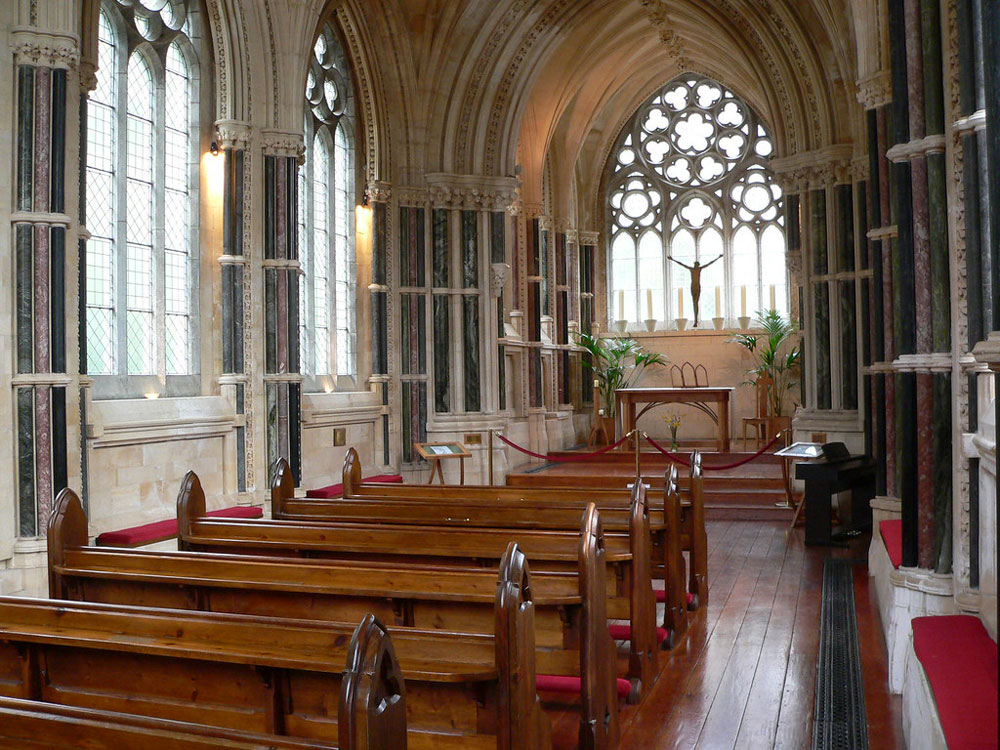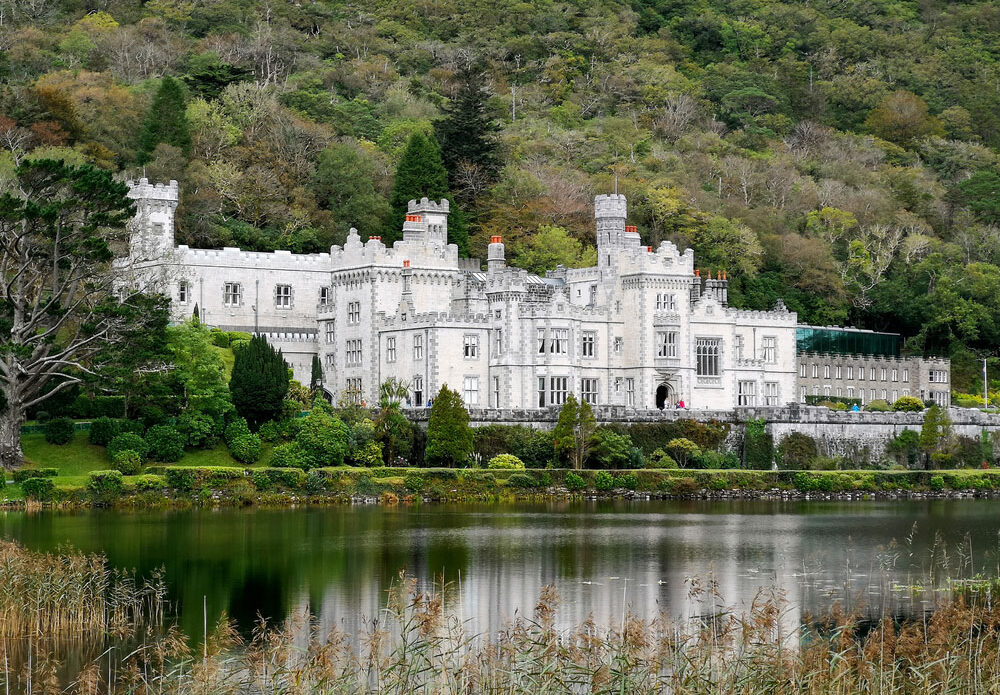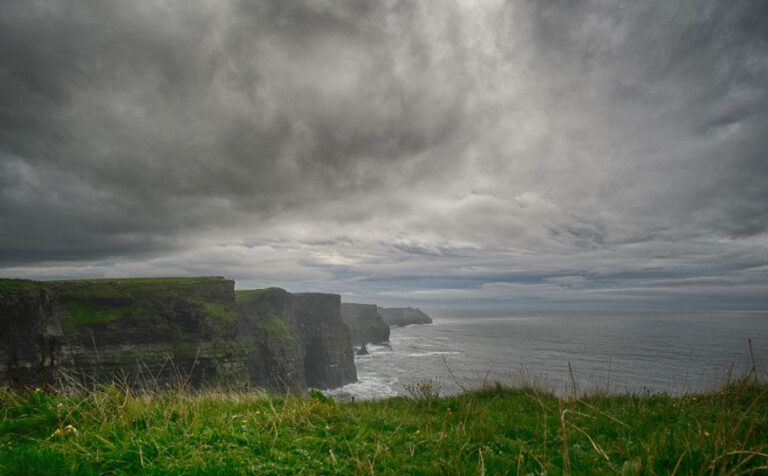A Glance Backward in Time
As I ambled through the lovely countryside of Connemara in Ireland, my nose was filled with the heady fragrance of blossoming flowers, and my ears were treated to the soothing sounds of the wind. A location steeped in history and beauty, Kylemore Abbey may be found tucked away in the most picturesque part of this enchanted environment. My sense of anticipation grew as I prepared to go out on a tour to discover the magnificent Benedictine abbey and the Victorian Walled Garden that it houses.
The history of Kylemore Abbey may be traced back to the latter half of the nineteenth century. It was initially constructed as a present for a couple, but over time it evolved into a well-known emblem of love and commitment. The rich Mitchell Henry and his wife, Margaret, who were on their honeymoon in Connemara when they fell in love with the spectacular beauty of the region, are the ones who are credited with founding the abbey.
The Henrys started on a massive undertaking, erecting a magnificent abbey in the style of a castle on the land surrounding Kylemore. This endeavor was motivated by their love for both one other and the Irish countryside. The architectural masterpiece was a combination of Gothic and Neo-Gothic elements, which resulted in a grandeur that was a perfect reflection of the natural scenery in the area.
However, calamity befell the family when Margaret was taken from them so suddenly. In honor of her, Mitchell converted Kylemore Abbey into a Benedictine convent and opened its doors to religious women who were looking for peace and spiritual sanctuary. Since that time, the monastery has been preserved as a haven of peace and contemplation; it combines the splendor of architectural design with a profound awareness of the spiritual.
As soon as I entered the abbey and saw its grand entrance, I felt as though I had been brought back in time. The sunlight was diffused by ornate stained glass windows, which resulted in the stone walls being illuminated by a rainbow of hues. The reverberations of the past could be heard throughout the hallways, and each echo carried with it a story of love, grief, and the ability to persevere.
As I made my way through the stately chambers, which were furnished with old pieces of art and hung with intricate tapestries, I couldn’t help but feel a great connection to the people whose lives had previously been lived in these areas. As I explored deeper into the abbey’s mysteries and pondered the tales of the nuns who had sought comfort within these walls, the abbey’s long and illustrious history came to life before my eyes.
The Reveal of the Walled Garden from the Victorian Era
After exploring Kylemore Abbey beyond its sacred corridors, I followed my curiosity to the estate’s most well-kept secret: the Victorian Walled Garden. I was not disappointed. This verdant haven, which was hidden from prying eyes, revealed itself with vivid hues and alluring scents as it opened its doors.
The Victorian Walled Garden was a testimony to the foresight and expertise of those who were responsible for maintaining its stunning beauty. It was a protected haven for a wide variety of plants, flowers, and fruit trees thanks to the huge stone walls that surrounded it on all sides. The Victorian era was known for its refined manners and attention to detail, which were reflected in the garden’s meticulous layout and careful design.
As I took a trip through the garden, I couldn’t help but be impressed by the vast variety of plant life that was able to flourish within its boundaries. Roses in delicate hues of crimson, pink, and ivory were entwined with climbing vines to create a tapestry that showcased the natural craftsmanship of the environment. I was whisked away to a place of peace and calm as the calming aroma of lavender and the beautiful perfume of blossoms in bloom floated through the air.
The Walled Garden was not only a place to admire the splendor of nature; it was also a place where people could get their food. A great harvest of apples, pears, plums, and berries was produced by fruit trees that had been meticulously pruned and cared for. The fact that the people living in Kylemore Abbey were able to sustain themselves through the bounty offered by the garden is evidence of the ingenuity and self-sufficiency of that era.
In the middle of the profusion of vegetation, there were secluded nooks and crannies that welcomed moments of reflection. Stone benches that were adorned with climbing ivy provided a serene retreat for guests, inviting them to pause and take in the enchantment of their surroundings. It was during these times of stillness and contemplation that the harmonic connection that exists between the natural world and the human spirit became fully apparent.
The Victorian Walled Garden at Kylemore Abbey was not only a horticultural wonder, but also a living witness to the dedication and passion of those who tended to its every need. The garden was designed in the nineteenth century and was enclosed by walls. Visitors like myself were able to enter a world that had been frozen in time thanks to the great efforts that have been made to conserve and maintain this botanical refuge. This world was one in which the splendor of Victorian architecture coexisted in perfect harmony with the beauty of nature.

Taking on Board the Atmosphere of Kylemore Abbey
As I moved deeper into the Kylemore Abbey’s embrace, the spirit of this holy place engulfed me with a sense of awe and calm as I was surrounded by its embrace. In addition to the splendor of its architecture and the allure of its gardens, it was the abbey’s intangible character that brought the place to life.
The presence of the Benedictine sisters, who have sought refuge within these walls for more than a century, could be felt throughout the building. Their commitment to living a life marked by prayer, work, and involvement in the community resounded throughout the corridors, resulting in an environment that was calm and serene.
I found the chapel, which was exquisitely decorated and served as a haven where spirituality and devotion were intermingled. It was located in the very center of the monastery. An ethereal light emanated from the pews, altar, and ornate woodwork that ornamented the area as sunlight entered the room via the stained glass windows. The nuns would come together to pray in this area, drawing comfort from the peace and quiet of their surroundings.
I was able to get a glimpse of the sisters’ dedication to a life of simplicity, selflessness, and reflection while I observed the nuns going about their daily activities. They showed their connection to the natural world and their commitment to maintaining the abbey’s beauty by tending to the flowers and plants in the gardens with love and devotion. This was an indication of the love and devotion they had for the abbey.
I was moved by the nuns’ unwavering sense of community and their mission to extend compassion and support to those who sought solace within the abbey’s walls as I engaged in conversation with them. Visitors such as myself were greeted with friendliness and warm hospitality, which contributed to the development of a sense of connection and comprehension.
In addition to the spiritual significance it holds, Kylemore Abbey is also recognized for its contribution to the conservation of Irish history and culture. An enthralling display can be seen within the abbey, which recounts the history of the building and the people whose lives have been entwined with its existence. A peek into the life of the Henry family, the early inhabitants of the abbey, and the transforming path that lead it to become a haven of spiritual refuge was provided via photographs, artifacts, and personal testimonies of those who lived there at the time.
As I left Kylemore Abbey, I took with me a tremendous appreciation for the abbey’s extraordinary beauty and depth, which I carried with me as I continued on my journey. Its architectural splendor, stunning grounds, and the spirit of the nuns who call it home create a fascinating tapestry of history, religion, and perseverance in the face of adversity.
A Look Back at the Past and a Fond Farewell to Kylemore Abbey
During the moments leading up to my departure from Kylemore Abbey, I was overcome with a profound sense of appreciation and introspection. My mind, body, and spirit will forever be changed by the time I spent completely submerging myself in that place’s rich history, beautiful gardens, and uplifting spiritual vibe.
When I thought back on the time I spent at the abbey, I couldn’t help but appreciate the tenacity and unyielding spirit that had contributed to the formation of this remarkable location. Kylemore abbey exemplified a profound sense of purpose and the ability to adapt throughout its history, from its beginnings as a testament of love to its transformation into a sanctuary for Benedictine nuns.
The magnificent Victorian Walled Garden, with its colorful blossoms and harmonious design, was a testament to the commitment that was put upon the natural world and the painstaking care that was given to it. It served as a timely reminder of the profound link that exists between people and the natural world, a connection that has been fostered for many years within the confines of the abbey’s walls.
Kylemore Abbey gained a spiritual depth as a result of the presence of Benedictine nuns and the nuns’ dedication to leading a life marked by prayer and service to others. Their unassuming devotion and welcome spirit could be felt in every nook and cranny, resulting in an environment that was peaceful and inviting. It was clear that the abbey had developed into a source of inspiration and consolation for those who were looking for tranquility and rebirth.
As I was leaving, I took one more stroll through the grounds, and as I did so, my eyes were drawn to the imposing walls and the magnificent architecture that had survived the passage of time. The steadfastness of history, as well as the power of human ingenuity and tenacity, was demonstrated by the fact that Kylemore Abbey remained standing for so long.
When I left Kylemore Abbey, I took with me a fresh perspective on the interconnectedness of our world, which is where love, faith, and resiliency come together to create something that is beyond compare. My heart will always have a special place for the experiences I had and the life lessons I picked up within these sacred walls. They will always be a treasured part of my own personal journey.
In the years to come, I will think back on the magic of Kylemore Abbey, as well as its breathtaking beauty and the profound sense of serenity that permeated itself throughout my entire being when I was there. It will always have a unique place in my recollections and serve as a timely reminder of the eternal strength that can be found in love, faith, and the human spirit.
Until we meet again, Kylemore Abbey. Everyone who has the opportunity to see the everlasting beauty that is your grace may continue to draw motivation from your majesty and energy.
Here are some more famous tourist attractions in County Galway:
- Cliffs of Moher: These magnificent cliffs are a UNESCO Global Geopark and a top natural attraction in Ireland. Marvel at the breathtaking views of the Atlantic Ocean and rugged coastline.
- Galway City: Known for its lively atmosphere and charming streets, Galway City offers a vibrant arts scene, traditional music, colorful festivals, and a wide array of shops, pubs, and restaurants.
- Connemara: Explore the wild and untamed beauty of Connemara, characterized by mountains, lakes, and stunning coastal landscapes. Visit Kylemore Abbey, Connemara National Park, and the quaint villages of Clifden and Roundstone.
- Aran Islands: Take a ferry from Galway to the Aran Islands and experience a glimpse of traditional Irish island life. Discover ancient stone forts, rugged cliffs, and a unique Gaelic-speaking community.
- Dún Aonghasa: Located on Inishmore, the largest of the Aran Islands, Dún Aonghasa is a prehistoric stone fort perched on the edge of a cliff, offering breathtaking panoramic views of the Atlantic Ocean.
- The Burren: Although technically in County Clare, the Burren is easily accessible from County Galway. This unique limestone landscape features rare flora and archaeological sites, including the Poulnabrone Dolmen.
- Galway Bay: With its stunning coastal scenery, Galway Bay is a haven for nature lovers. Take a scenic drive along the bay, visit charming fishing villages, and enjoy fresh seafood along the coast.
- Coole Park: Immerse yourself in nature at Coole Park, a former estate known for its picturesque woodlands, walking trails, and the “Autograph Tree” adorned with the signatures of renowned literary figures.
- Galway Atlantaquaria: Delve into the marine world at Ireland’s National Aquarium in Galway. Explore fascinating exhibits showcasing a variety of marine life, including sharks, rays, and seahorses.
- Thoor Ballylee: Visit the 15th-century tower house that was once the home of poet W.B. Yeats. Discover the literary connections and immerse yourself in the poetic atmosphere of this historic landmark.
Recommended Reading:
- A Grey Day at the Spectacular Cliffs of Moher
- An Aran Island Adventure
- The Connemara National Park: A Guide to Ireland’s Wild and Rugged West Coast
- A Day in Galway City: Where Stories Unfold
Helpful Resources:




